Farah Clothing, an American ready-to-wear clothing company, was founded in the 1920s in El Paso, Texas, by Mansour Farah and his wife, both Lebanese immigrants. Over the decades, Farah has carved a niche for itself in the fashion industry, known for its quality menswear and distinctive logo. This storied brand has not only survived but thrived, adapting through various eras and maintaining its relevance. By delving into the history and evolution of the Farah logo and tags, we can uncover the vintage authenticity of Farah clothing, making it easier for collectors and enthusiasts to identify genuine vintage pieces.
In the beginning, Farah Clothing established itself as a significant player in the apparel market, producing a vast range of products, including blue jeans, which were particularly popular. The company grew rapidly under the leadership of Mansour Farah’s sons after his death in 1937. By the mid-20th century, Farah was a publicly traded company, manufacturing on a large scale for the U.S. military and retail markets. The 1970s marked a peak in the company’s success, with Farah becoming the world’s leading producer of men’s pants. Despite facing significant challenges, including labor strikes and market crises, Farah managed to weather these storms and continue its legacy.
The Farah logo has undergone several transformations over the years, each reflecting the design trends and brand identity of its time. From the simple, elegant script “F” of the 1950s to the bold, uppercase “FARAH” of the modern era, the logo serves as a visual timeline of the brand’s evolution. Similarly, the tags on Farah garments have also changed, offering clues to their vintage. Early tags from the 1960s featured minimalist designs, while those from the 1980s and 1990s became more colorful and detailed. Understanding these nuances helps in identifying the era of a Farah piece, adding value and authenticity for collectors.
Farah’s resilience and adaptability are evident in its long history and continued relevance in the fashion world. From its humble beginnings in Texas to becoming a global brand, Farah has maintained its commitment to quality and style. By learning to identify vintage Farah items through their logos and tags, fashion enthusiasts can appreciate the rich heritage and craftsmanship that each piece represents. This guide will provide you with the knowledge to distinguish genuine vintage Farah clothing, ensuring that your collection is both authentic and timeless.
Iconic 70s Farah Slacks TV Commercial
How to tell if Farah is vintage from the logo
Farah has a rich history that spans over several decades, known for its quality menswear and distinctive logo. Over the years, the Farah logo has undergone several transformations, each reflecting the era’s design trends and the brand’s evolving identity. By examining the changes in the Farah logo, you can determine the vintage of your Farah clothing item.
Struggling with vintage tags or labels? Upload a picture on our vintage tag identification page, and we’ll help you out!
1950s to 1990s Farah logo
- The earliest Farah logo features a simple, elegant script “F” as the primary symbol.
- The typography is cursive, giving it a classic and sophisticated look.
- This logo is often seen on vintage Farah products from mid-20th century.

1950s to 1990s Farah logo
2000s to now Farah logo
- The modern Farah logo includes both the iconic “F” and the brand name “FARAH” in bold, uppercase letters.
- The “F” symbol is stylized and often colored in a distinct yellow-orange shade.
- The typography for the “FARAH” text is blocky and capitalized, providing a contemporary and clean look.
- This logo marks the brand’s modern era, representing its current identity and style.
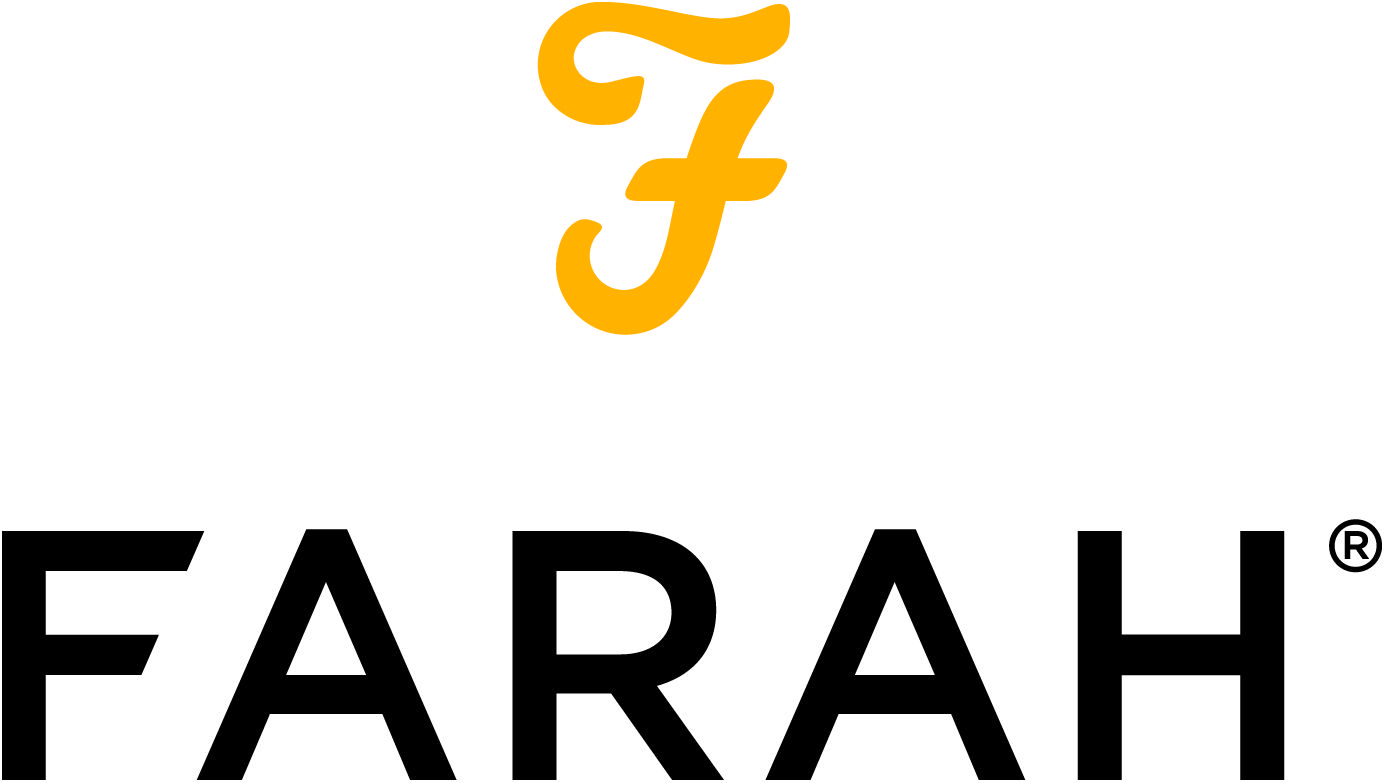
2000s to now Farah logo

2000s to now Farah logo
How to tell if Farah is vintage from the tags
Farah has been a notable brand in the fashion industry for decades, known for its classic and timeless designs. Over the years, the brand’s tags have evolved, reflecting changes in branding and manufacturing techniques. Identifying the era of a Farah garment can be done by examining the tags. Here’s a guide to help you determine if your Farah piece is vintage based on the tags.
1960s vintage Farah tags
- Features simple serif lettering.
- Tags often include “Farah” with minimal design elements.
- Made in U.S.A. with basic care instructions.
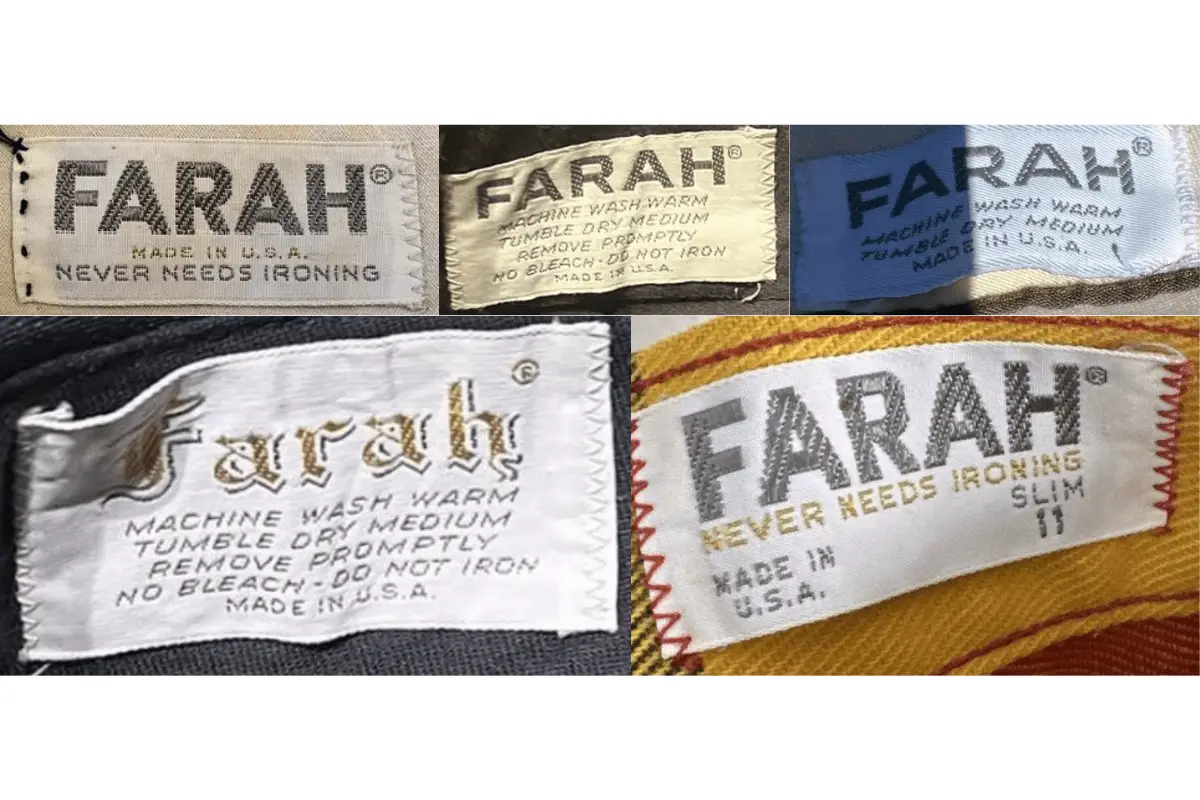
1960s Farah tags
1970s vintage Farah tags
- Introduction of more detailed branding, often with “Farah Clothing Co.
- Tags are rectangular with bold serif lettering.
- Emphasis on quality and performance in the branding.
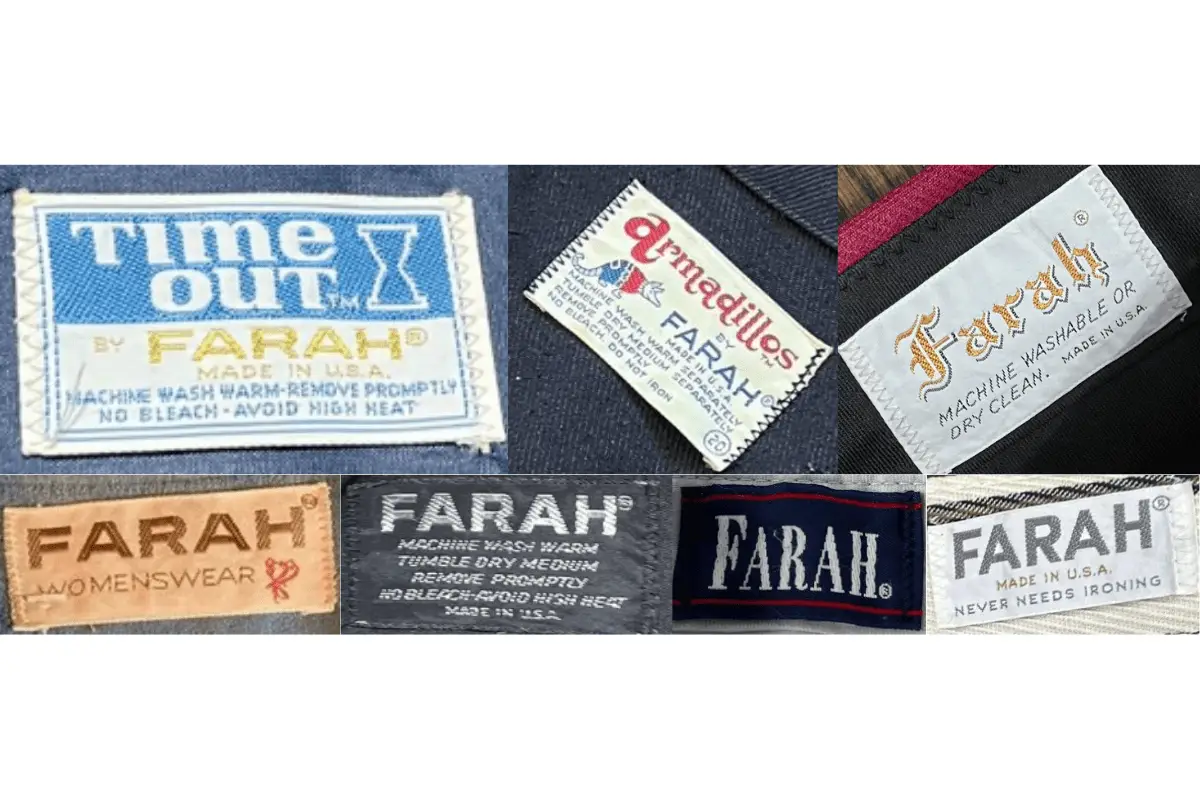
1970s Farah tags
1980s vintage Farah tags
- Tags feature “Farah” with additional descriptors like “Farapress.
- Introduction of new fonts and tag colors.
- Includes more detailed care instructions.

1980s Farah tags
1990s vintage Farah tags
- Continued use of “Farah” branding with modern fonts.
- Tags become more colorful and varied in design.
- Includes size indicators and specific product lines like “Farah Jeans.

1990s Farah tags
2000s vintage Farah tags
- Modernization of tag designs with darker colors and sleeker fonts.
- Introduction of loop tags and more intricate branding details.
- Tags often include size information and specific collection names.
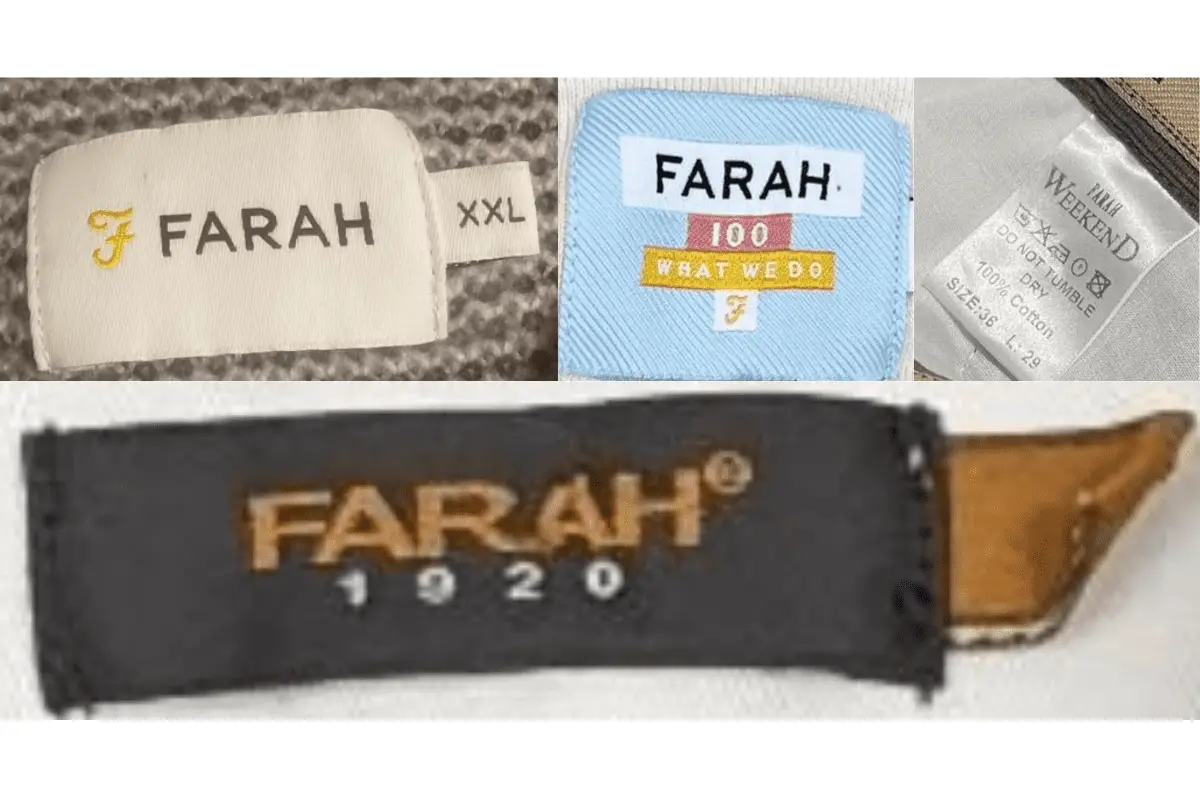
2000s Farah tags
2010s vintage Farah tags
- Continued evolution with a variety of colors and materials.
- Modern layouts while retaining the classic Farah logo.
- Additional styles and layouts introduced, reflecting contemporary design trends.
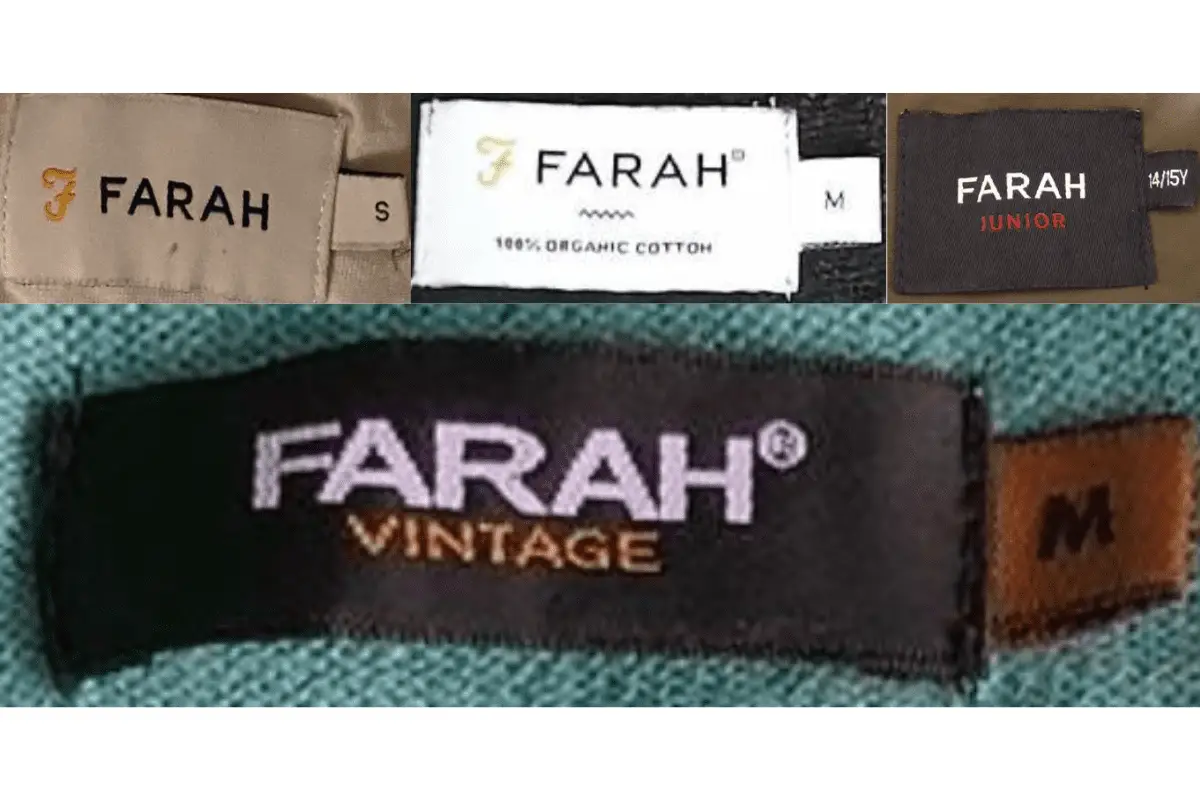
2010s Farah tags
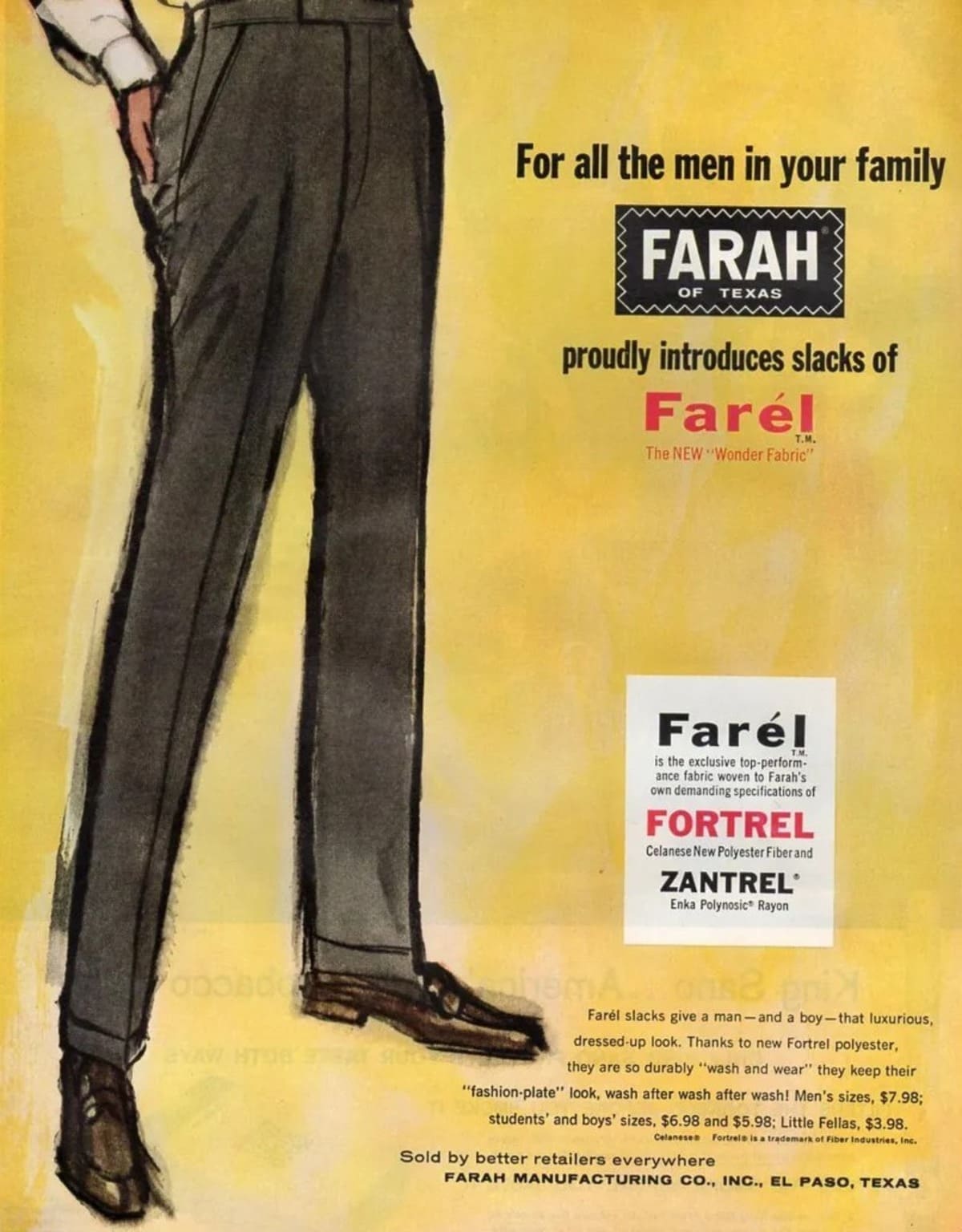

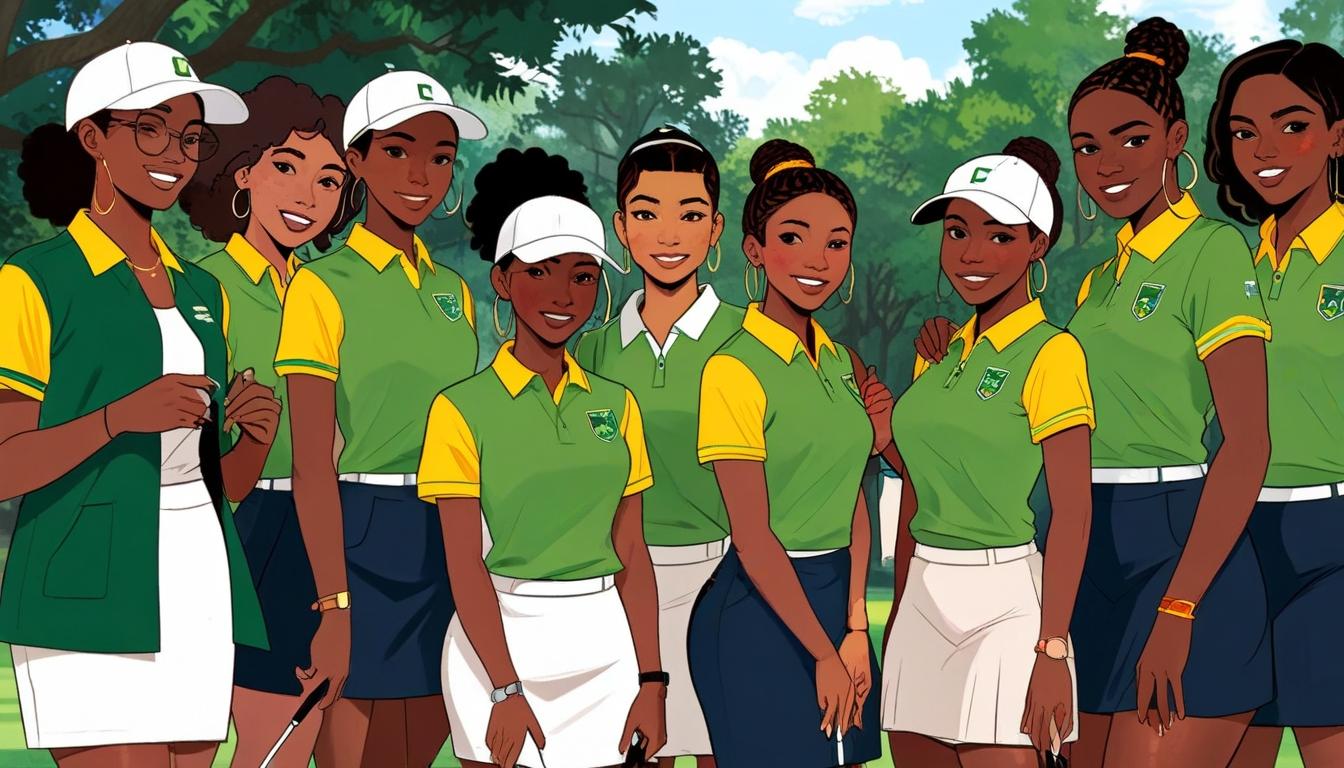
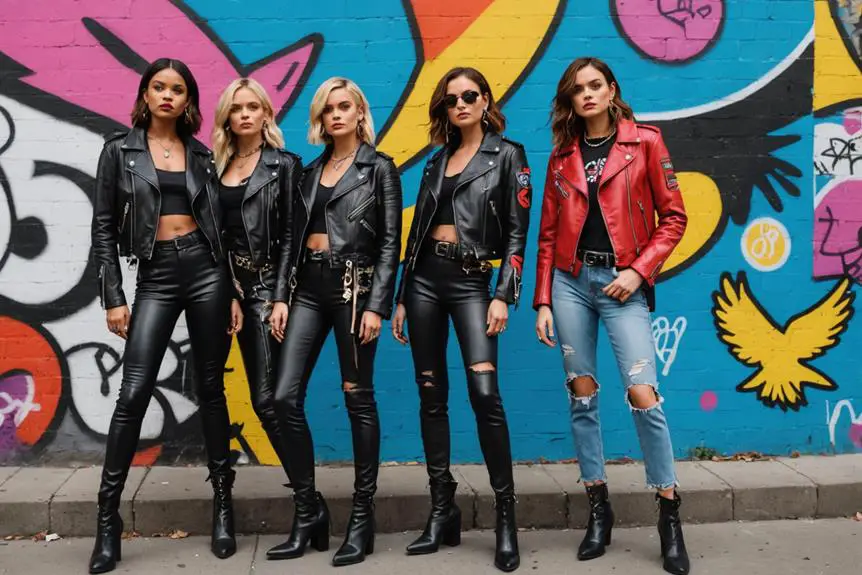

Simply want to say your article is as surprising.
The clearness in your post is simply excellent and i
could assume you are an expert on this subject. Fine with your permission allow me to grab your feed to keep updated
with forthcoming post. Thanks a million and please keep up the gratifying work.